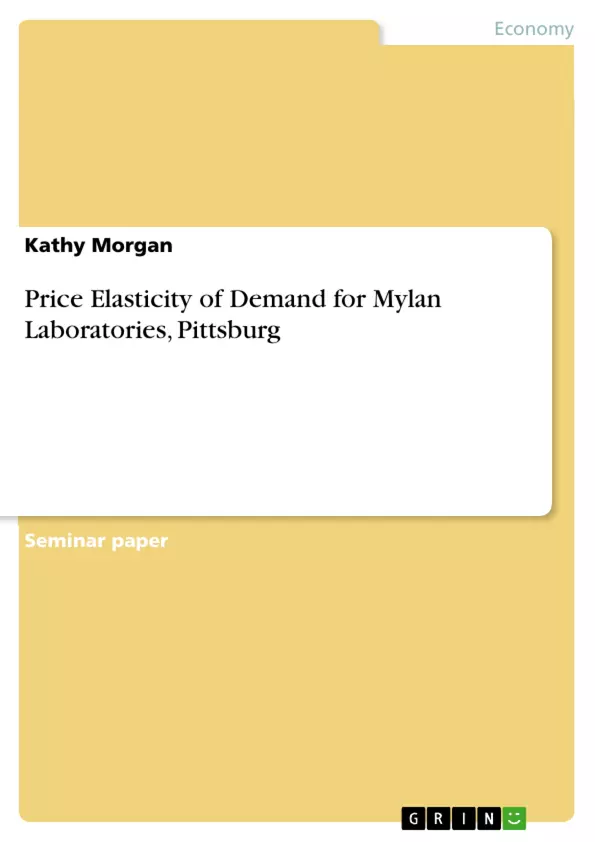The price elasticity of demand (PED) is used to measure how price changes affect the quantity of goods or services sold. It is therefore a responsive mechanism and is applied to all industries. The most common description as crafted by Alfred Marshall is the percentage change of the quantity of a product demanded in response to a one percent change in the price of the product with all other factors remaining constant (Marshall 1920). When the change in demand is relatively unaffected (where the PED is less than 1), the goods sold are considered to be inelastic. In a business aiming at maximizing revenue, the PED has to be exactly 1. A PED higher than 1 reflects a very elastic product where the quantities demanded are largely affected by the price change. The figures below reflect the way the various curves will look like in different scenarios.
Inhaltsverzeichnis (Table of Contents)
- Introduction
- Mylan Laboratories
- Conclusion
- References
Zielsetzung und Themenschwerpunkte (Objectives and Key Themes)
This text aims to analyze the price elasticity of demand for Mylan Laboratories' drugs, particularly focusing on the impact of a significant price increase on the quantity demanded. The analysis examines how the inelastic nature of the pharmaceutical industry and factors like availability of substitutes, switching costs, and brand loyalty influence consumer behavior in response to price changes.
- Price Elasticity of Demand in the Pharmaceutical Industry
- Impact of Price Increases on Drug Demand
- Factors Influencing Elasticity: Substitutes, Switching Costs, and Brand Loyalty
- Government Regulation and Patent Protection
- Monopolistic Tendencies in the Pharmaceutical Industry
Zusammenfassung der Kapitel (Chapter Summaries)
- Introduction: The text begins by defining price elasticity of demand (PED) and its relevance to various industries. It explains the concept of elastic and inelastic demand and how PED affects revenue maximization.
- Mylan Laboratories: This section focuses on a specific case of Mylan Laboratories, a pharmaceutical company in Pittsburgh, which raised prices of its drugs, specifically lorazepam, by a significant margin. The text examines the potential impact of this price increase on demand, considering factors such as consumer dependence, availability of substitutes, and brand loyalty.
- Conclusion: This section summarizes the findings, highlighting the inelasticity of demand for pharmaceutical products, particularly those protected by patents. It discusses how monopolistic tendencies in the pharmaceutical industry allow companies to maximize revenue without significant fear of losing customers.
Schlüsselwörter (Keywords)
Key terms and concepts explored in this text include price elasticity of demand, pharmaceutical industry, drug pricing, patent protection, monopolistic tendencies, inelastic demand, substitutes, switching costs, brand loyalty, and government regulation.
- Quote paper
- Kathy Morgan (Author), 2011, Price Elasticity of Demand for Mylan Laboratories, Pittsburg, Munich, GRIN Verlag, https://www.grin.com/document/267032



